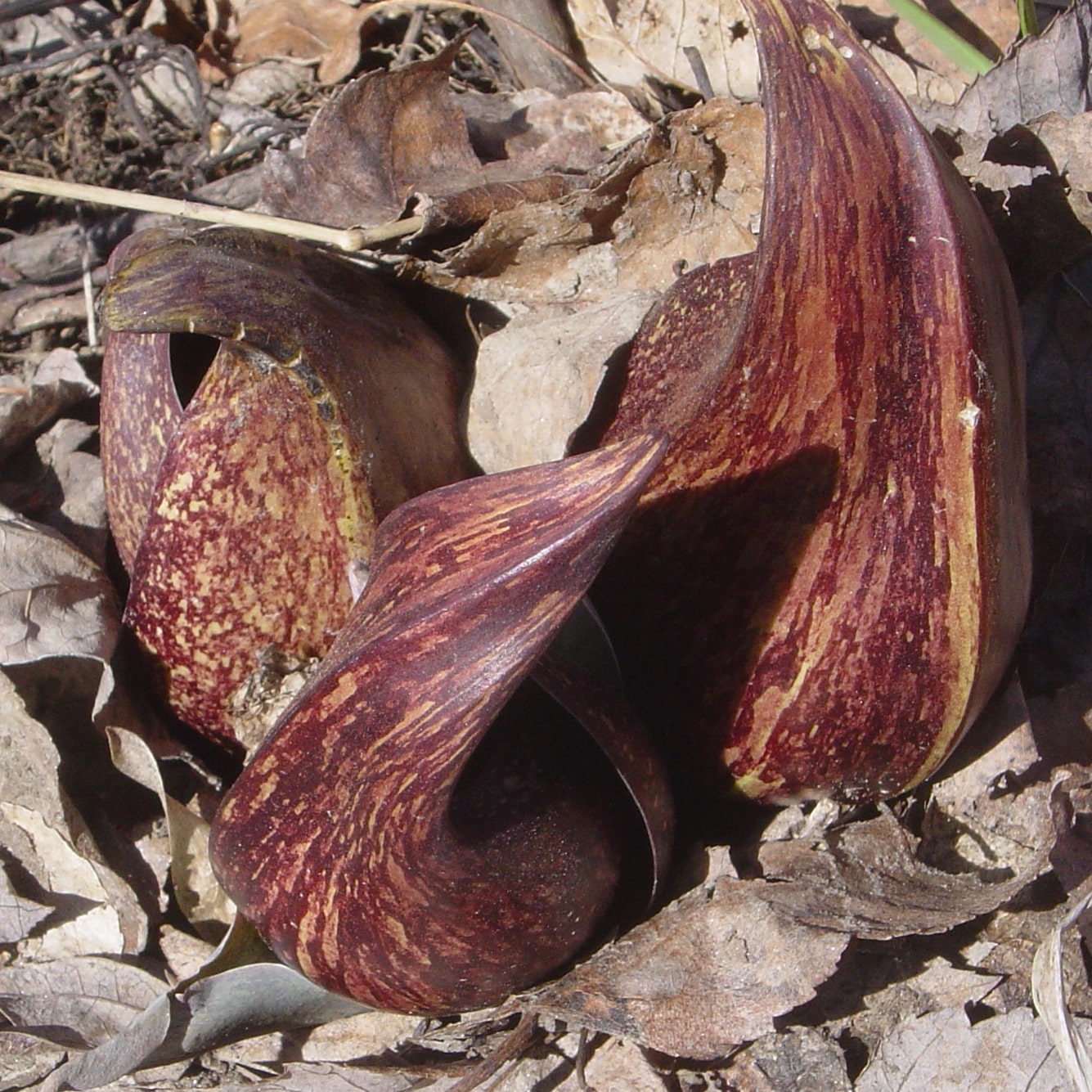Another week advances the season toward springtime, and the “second battalion” of the annual flowering parade is appearing. Each day’s increasing sunlight charms the buds of the earliest forsythia cultivars to swell and start revealing the golden blooms waiting inside.
The native swamp maples (Acer rubrum) are likewise enticed to begin opening their profuse tight clusters of red flowers along each twig, imparting a gentle season-awakening haze when viewed from afar.
At ground level, nature’s distinctive, stippled-purple hoods (scientifically a “spathe”) of skunk cabbage (Symplocarpus foetidus, a thermogenic plant) jut skyward from the swamp muck, having just melted through the surrounding snow and ice to reveal a fleshy spadix (flower-like structure) enfolded inside, primed for pollination by the earliest insects.
I find it interesting that excepting witch-hazel, most of the early-flowering plants (with the obvious exception of skunk-cabbage with its pollinator-attracting, carrion-like odor) emit negligible floral fragrance. Perhaps that’s because their color offerings are alluring, with minimal competition for pollinators at this early season.
And the recently-revealed-soil surface, finally freed from its frost and winter blanket, emits its unique, fetid, early-spring aromas, redolent of moss and decomposing leaves. Simply venturing outdoors again is so invigorating, inspiring us to resume so many warmer-weather activities. Although ground conditions in some areas may be still too moist to begin gardening tasks, most well-drained soils around our yard are ready for action. Now is the perfect time to remove last season’s withered branches, stir the mulch and prepare the garden for those long-awaited additions.







